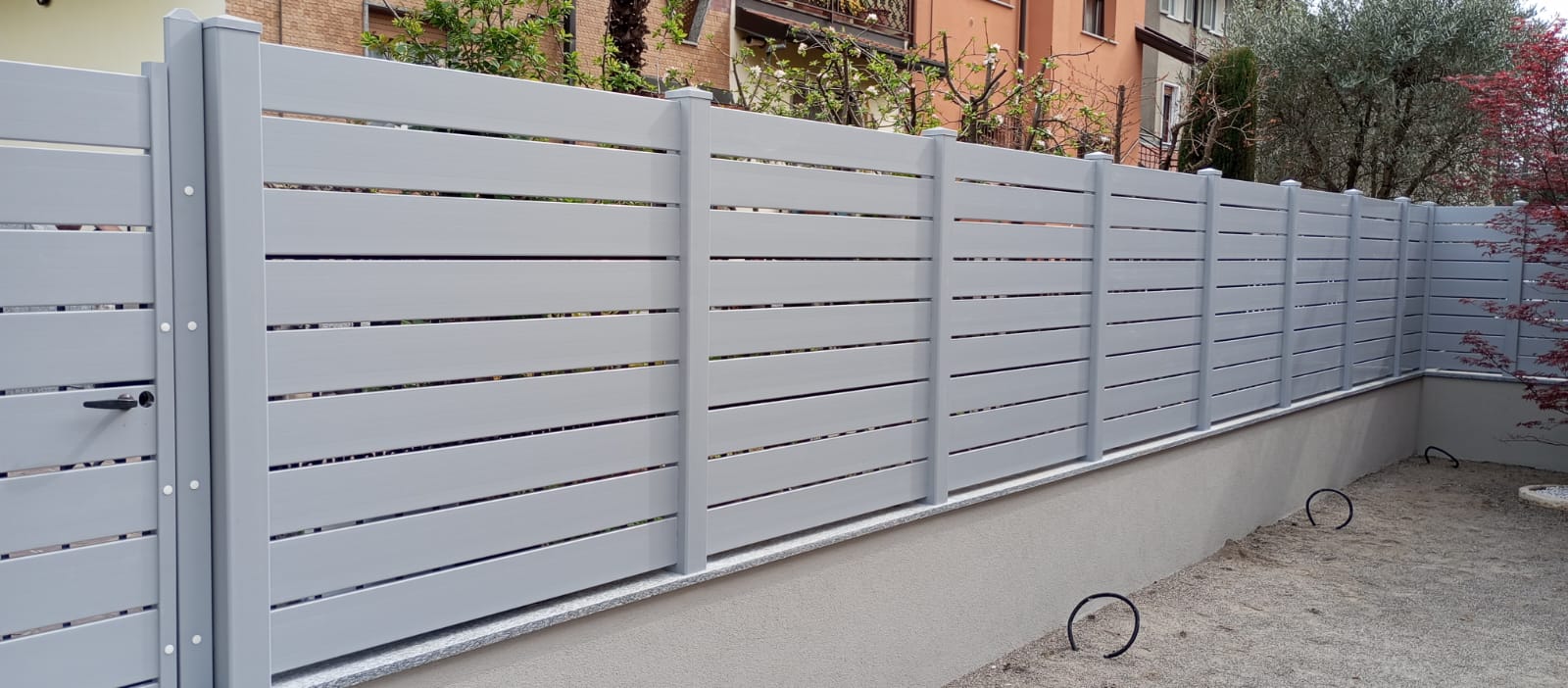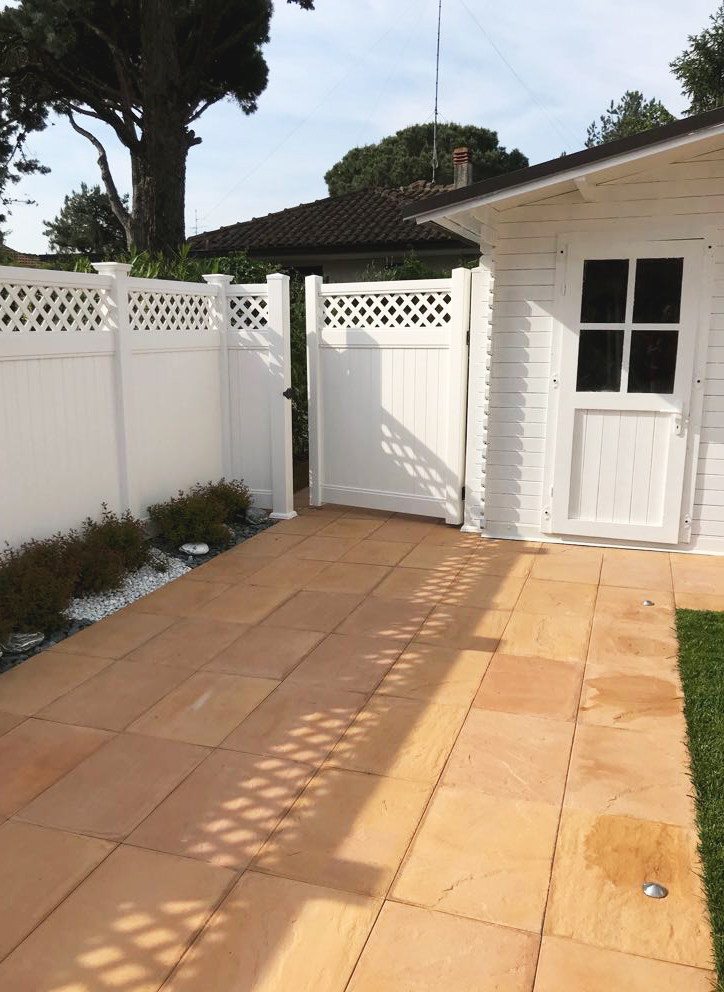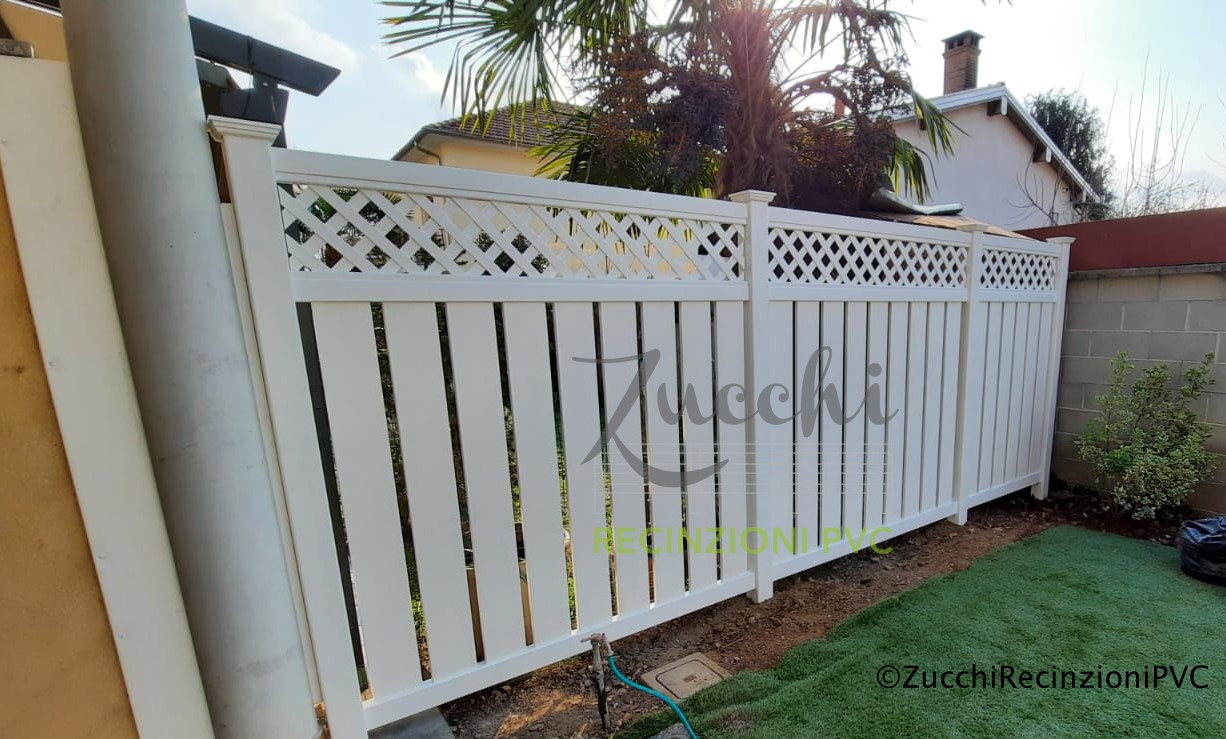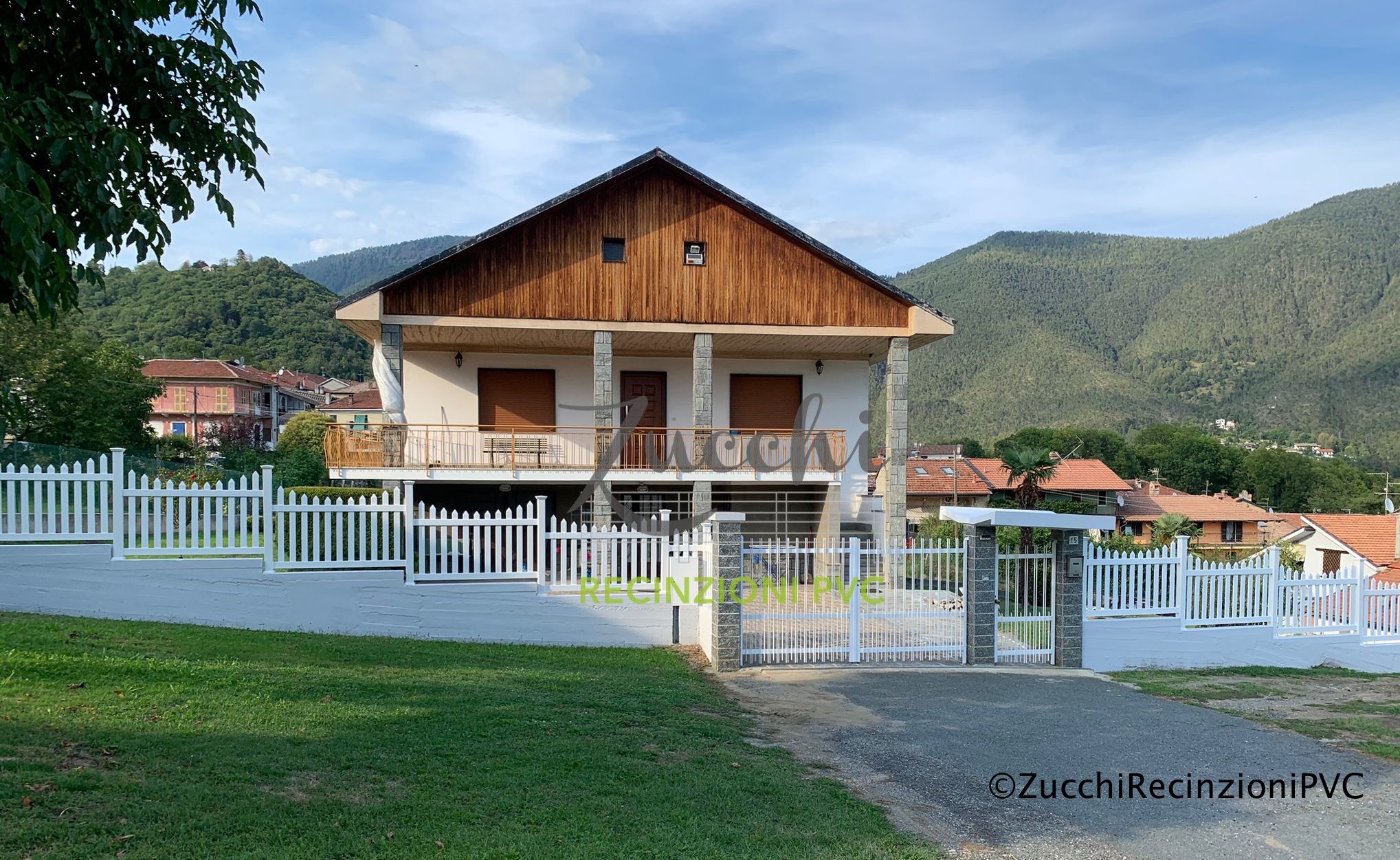Standards and Regulations for the Installation of Partitions in Condominiums
If you live in a condominium, you know that managing common spaces is never easy. Between neighbors, shared gardens and condominium terraces, it’s easy to feel a bit “at the mercy” of others. That’s why many condominiums decide to install dividers to improve privacy and separate their spaces. But before you pick up the hammer and PVC, it is important to know the rules and regulations governing the installation of these partitions. In this article, I will take you step by step through the main rules and how to navigate them to get the result you want.
-
The Importance of Knowing Condominium Regulations.
When it comes to installing a divider in a condominium, the first thing you need to do is to find out about condominium regulations. Each condominium has its own regulations, which may set restrictions regarding the use of common areas. It is not uncommon for there to be specific restrictions on the materials that can be used, the height of the partitions, or even the type of installation that is allowed.
For example, if you plan to partition your garden, terrace, or a shared yard, you will need to check whether the condominium assembly has set limits regarding the height of the divider or how visible it should be. Condominium bylaws often stipulate that any changes to common spaces, including dividers, must be approved by a majority of the condominiums. Therefore, before starting the project, it is essential to consult the regulations and talk to the condominium administrator.
-
The Consent of the Condominium Meeting: A Fundamental Step
One of the most important aspects to consider when installing a partition in a condominium is obtaining the consent of the condominium assembly. In many cases, it is not enough to simply decide what to do: you need everyone or a large majority of the condominium residents to agree. If you are considering a project that involves a shared space, such as a condominium garden, you will need to seek permission from the assembly. Without their okay, any intervention could be illegal.
This might seem like a bureaucratic step, but it is a key part of the process. After all, we all live in a shared space, and any changes must take into account the needs of others. When preparing your proposal, try to be as clear as possible: show how the PVC divider will improve privacy and contribute to a more orderly management of outdoor spaces. Also add details about the material you choose, such as PVC, which is strong, durable, and does not require excessive maintenance. If other condominiums see the benefits, it will be much easier to gain approval.
-
The Legal Limits: What You Can and Cannot Do
Although PVC is an ideal choice for separating spaces, it is not always possible to do everything you want. Condominium regulations may limit the height, visibility or type of divider you can install. For example, you may not be allowed to put up a divider that is too high that would obscure the view of other condominiums or prevent light from entering. It is therefore essential to respect the limits imposed by the condominium.
In addition, some apartment buildings may have preferences for certain materials, which must be consistent with the overall aesthetics of the building. PVC is highly regarded for its durability and weather resistance, but if aesthetics are a concern for your neighbors, you may have to opt for more discreet partitions or a more elegant finish. If you are unsure of the specific regulations, don’t hesitate to seek advice from your building manager. He will be able to guide you through the existing regulations.
-
How to Navigate the Regulations: Useful Tips
Now that you know the importance of condominium regulations, it is time to see how best to navigate this process. First, consult the condominium bylaws. It is usually available online or can be requested directly from the condominium administrator. Read carefully the sections on changes to common areas, outdoor structures, and use of materials. If there is nothing specific about partitions, it is a good idea to talk to other condominiums to find out if there have been similar precedents.
Once you know the boundaries and rules, prepare a clear and detailed proposal to present at the meeting. Include all the details about the type of divider you wish to install, such as PVC, and show how it will improve the privacy and livability of the space. If the PVC divider is functional and aesthetic, it is likely to be well received. But don’t forget: every apartment building is different, so try to maintain an open and constructive dialogue with your neighbors and the administrator.
Adapting Divisors to Common Needs Under the Laws
When it comes to installing dividers in condominiums, it is never a decision you can make alone. If you think that putting a PVC divider on your terrace or in the condominium garden is an easy choice, I advise you to think about it carefully. Any changes to common spaces must be thought through carefully, not only to meet your needs for privacy and comfort, but also to comply with condominium laws. In this post, I will explore how to adapt partitions to common regulations and find the right balance between your personal and collective needs.
-
Understanding Common Needs: Why You Are Not Alone
Living in an apartment building means sharing spaces with other people, and this necessarily involves efforts to maintain harmony among everyone. When installing partitions, it is crucial to think not only about yourself but also about other residents. Privacy is important, but your neighbors may also have their own needs, such as the right to light, open spaces, or a uniform appearance of the building. So, the first step in adapting your partition to common needs is really listening to those who live around you.
Don’t forget that condominium bylaws exist precisely to prevent everyone from doing what they want without considering the implications for others. For example, your new divider could block someone’s view or obstruct natural light coming into neighboring dwellings. This can create real discontent among neighbors and could lead to conflict or formal requests to the administrator. The key, then, is to look for a solution that works for you without compromising the well-being of others. Here are some tips on how to do this.
-
The Importance of Communicating with Neighbors and the Administrator
When thinking about installing a PVC partition in your outdoor space, dialogue with your neighbors is crucial. Before you officially present the project at the condominium meeting, talk directly with those who might be affected by your choice. You may find that the divider you have chosen is too tall, too intrusive, or doesn’t fit with the overall aesthetics of the condominium. This kind of feedback can help you make more informed decisions.
PVC is definitely a strong and durable material, but if its appearance is too rigid or clashing with the style of the apartment building, it may not be well received. Talk to the neighbors and ask what they think. If they are in favor of the design, it will be much easier to get approval at the assembly. In addition, the building manager can also help you understand if there are specific rules to follow or if there have been similar changes in the past. Good dialogue can avoid so many problems and make the whole process much smoother.
-
Adapting PVC Partitioning to Condominium Regulations
Each apartment building has its own internal regulations, and there are often limitations regarding the height, location, and material of partitions. PVC is not necessarily a problematic material; on the contrary, it is highly valued for its durability and ease of maintenance. However, there may be restrictions on the appearance or maximum height of the divider.
Before proceeding with the installation, consult the condominium bylaws. You can request it from the condominium administrator or members of the assembly. Find out if there are any specific guidelines regarding the management of outdoor spaces and structures to be installed. Some condominiums, for example, may have rules stating that partitions cannot exceed a certain meter in height, so as not to block the view or light access of others. If your PVC divider does not meet these limits, you may have to find an alternative solution, such as reducing the height of the divider or opting for a different material.
In any case, it is important to adapt your project to the common needs, keeping in mind that any changes must contribute to the overall harmony of the condominium. In this way, you will be able to obtain the necessary permission without having to deal with unnecessary conflicts.
-
Designing a Partition that Respects Common Space
Even if you are excited to finally have some privacy in your garden or terrace, don’t forget that shared spaces are for everyone. Separation should be designed so that it does not harm the functionality of these shared areas. If you have a small garden that you share with other neighbors, try to choose a divider that does not obstruct passage or make maintenance difficult.
Another aspect to consider is the aesthetics of the divider. In an apartment building, where everyone has to live together, the overall appearance is very important. Make sure that the PVC partition does not look too out of place with the architecture of the building. You can also choose finishes that blend in better with the surroundings. For example, if your apartment building has a modern style, choose a minimalist divider. If, on the other hand, it has a more classic look, opt for a more subtle finish or shade that harmonizes with the building.
The height of the divider is also crucial. If the divider is too high, it may prevent airflow or light from entering. Try to maintain a height that respects the right to privacy but does not ruin the harmony of shared spaces. This way, not only will you have your own private corner, but you will also help maintain harmony among the condos.
How to Obtain Condominium Consent for Structural Changes
When you live in an apartment building, making decisions that affect your unit is not always so simple. Any changes, large or small, must go through a process that involves other residents. If you plan to make structural changes such as installing partitions, altering the garden, or changing the exterior appearance, it is essential to get the consent of the condominium. But how to do this? In this post, I will guide you step by step on how to get consent, making the process as smooth and easy as possible.
-
Know the Rules of Your Condominium: The First Move
The first step in obtaining condominium consent is to know the internal rules. Every condominium has regulations that state what you can and cannot do with common and private areas. Most regulations indicate that any structural changes, even if they only affect your outdoor space, must be approved by the condominium assembly. For example, if you want to install a divider in your garden, this could affect shared spaces, and so you have to ask permission.
You should consult the condominium bylaws to see if there are specific clauses that pertain to your modification. If you are not sure where to find it, ask the building manager. Some bylaws may also specify criteria for altering balconies, terraces, or other outdoor spaces, and knowing these in advance will help you understand what the likelihood is of getting consent.
-
Talking to Other Condos: An Essential Step
Before submitting a formal proposal to the assembly, it is always a good idea to discuss it with your neighbors. Prior communication is the key to avoiding conflict and misunderstanding. Talk to those who might be most directly affected by your change and ask them what they think. If your idea is well received, it will be easier to present it at the assembly with the support of your neighbors.
Remember that people living near you may have concerns, such as the visibility of the divider or the effect it might have on their outdoor space. For example, if you plan to install a PVC divider in the condominium garden, there might be some concerns about the aesthetics or the impact it will have on the common spaces. Offering a preview of your proposal to neighbors and listening to their concerns will help you prevent problems later on.
-
Prepare a Clear and Detailed Proposal
Once you have talked to the neighbors and know the condominium rules, the next step is to prepare a detailed proposal. When it comes to structural changes, it is critical to be clear about what you are trying to do. A well-prepared proposal will show that you have thought carefully about your modification and considered the impacts on other condominiums.
If you want to install a PVC divider, for example, describe the material you plan to use, height, location, and overall appearance. Explain how this divider will improve the privacy and livability of outdoor spaces without harming the aesthetic appearance of the building or the usability of other common spaces. If possible, also include sample pictures or samples of the material so that other apartment buildings can better visualize the design.
Be sure to also include details about the cost and maintenance of the divider. Showing that the project will be easy to manage and will not result in additional expenses for other condominiums can be a plus point for your proposal.
-
Present the Proposal in the Assembly: The Crucial Moment
The next step is to present the proposal at the condominium meeting. This is when your idea will be considered and voted on by the condominiums. Before you go to the meeting, make sure you have all the information you need to answer any questions that may arise. The better prepared you are, the more likely you will be to gain approval.
During the assembly, maintain a positive and open attitude. Clearly explain the benefits of the change and how it will contribute to improving the quality of life in the condominium. Show willingness to answer any questions or concerns and try to make sure that everyone feels heard.
Don’t forget that a majority of the condominiums is usually required to obtain consent. So try to be patient and open to any changes or requests. You may have to make some adjustments to the initial design to meet the needs of others.
-
Comply with Timelines and Procedures
Each condominium has its own timeframe and procedures for structural changes, so it is important to respect them. In some cases, you may have to wait for a specific meeting to be called in order to discuss your proposal. In others, there may be an opportunity to approve changes through a majority decision by email or at an informal meeting.
Be sure to follow all the procedures involved, from proposal preparation to the final vote. This will show that you are respectful of the condominium rules and that you take the decision to make changes seriously. If the proposal is accepted, congratulate yourself on finding a solution that meets your needs without creating conflicts with other condominiums.
Legal Advantages in Choosing Regulatory Compliant Solutions
When you think about making structural changes to your home or outdoor space, you are probably excited about the idea of improving your privacy and comfort. However, there is one thing you cannot forget: legal regulations. Choosing solutions that comply with condominium or municipal laws is not just a matter of avoiding fines or issues with neighbors, but brings with it numerous legal benefits that can make your life easier. In this article, we will explore together the reasons why opting for regulation-compliant solutions will make you sleep soundly and make the whole process significantly easier.
-
Avoiding Legal Problems in the Long Run
One of the main legal advantages of complying with regulations when choosing solutions for your home is that you avoid having to deal with legal issues in the future. If you install a divider without having obtained your neighbors’ consent or without complying with condominium regulations, you could find yourself in trouble. Your neighbors may object, the condominium administrator may ask you to remove the structure, and, in the worst case, you could be fined.
Following the rules allows you to be safe from any kind of legal litigation. Also, if you don’t comply with the laws, you risk having to dismantle the structure you just installed, complete with additional costs to repair the damage and put everything back in place. Avoiding these kinds of complications allows you to enjoy your home worry-free, knowing that you have complied with all applicable laws.
-
Increase in Property Value
When you choose solutions that comply with regulations and meet condominium or municipal standards, you also increase the value of your property. If your apartment or house has approved modifications that follow the regulations, this will be a plus when you decide to sell it. Buyers are increasingly attentive to legal issues and what has or has not been done within the regulations.
Think of a situation in which you installed a PVC partition that complied with all laws. Not only have you avoided potential problems, but when the time comes to sell your property, buyers will know that the property has been maintained in order and according to the rules. Also, if there are changes or inspections by the administration in the future, you won’t have to worry about having to repair damage or dismantle noncompliant structures.
-
Greater Transparency and Reliability with Institutions
Complying with the regulations not only protects you from legal action, but also allows you to be seen as a responsible and trustworthy person by the relevant institutions, such as the condominium administrator, local authorities, and other condominiums. When you abide by the rules, you show that you are aware of the importance of living peacefully with others and want to avoid problems.
Being known for choosing solutions in line with condominium regulations also makes you more confident with the condominium administration. You will be more likely to receive quick and positive support if you need further changes or interventions in the future, since you have always demonstrated compliance with the rules. Basically, you will have a more peaceful and professional relationship with those who manage the common areas.
-
Respect for Common Spaces: Prevention of Conflicts with Neighbors
Imagine you want to install a PVC divider in your garden or terrace. If you do not comply with condominium regulations, you could cause discomfort to your neighbors. A divider that is too high, or a modification that restricts access to sunlight or air, could trigger conflict. In addition, installing a structure that does not follow condo rules could generate a negative reaction from other residents, creating a tense atmosphere.
By opting for solutions that comply with regulations, you demonstrate that you value others and want to live in harmony. You will comply with the measures provided to prevent your modification from adversely affecting common spaces or neighbors’ rights. This approach reduces the risk of legal disputes and misunderstandings that could ruin your relationship with those who share living space with you.
-
Ease of Insurance and Warranties
Another major legal advantage to opting for regulation-compliant solutions is that it eases your position with insurance companies. If your home has approved and certified modifications that comply with all laws, it will be easier to get comprehensive insurance coverage. Insurance companies are more willing to cover damages or accidents that occur on structures that are compliant with the law, reducing the risk of complications in case of claims.
In addition, if you choose to use high-quality materials such as PVC for partitions, which is strong and durable, you may get longer warranties for your installation. Choosing solutions that comply with regulations gives you legal and economic protection that will make you feel safer and more secure.
Conclusion: The Tranquility that Comes from Complying with Regulations
Choosing solutions that comply with condominium and municipal regulations offers numerous legal benefits, from saving on legal costs to improving the quality of life in the condominium. Avoiding conflicts, increasing your property value, and simplifying your situation with institutions and insurance companies are just some of the benefits. Simply put, complying with the laws allows you to enjoy your space with total peace of mind, without legal worries. If you decide to make changes to your home or garden, always choose solutions that comply with regulations. By doing so, you will protect yourself, your home and your relationships with your neighbors.







Leave A Comment